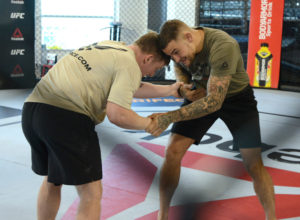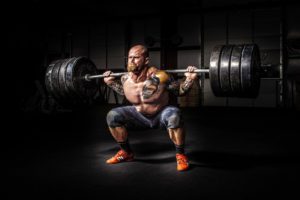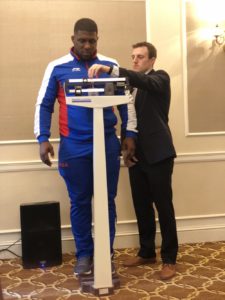
Fans of boxing, wrestling and mixed martial arts (MMA) are familiar with it: combatants weigh in at a designated day and time before the match (often within 24 hours), as per the rules of the sport. For the athlete, making the legal weight can be a struggle, particularly in those last few hours, when every last ounce of sweat and other bodily excretions are voided, sometimes in a desperate, several-day fast that can be more injurious than the actual competition.
How widespread and dangerous rapid weight loss (RWL) can be are the main subjects of a newly released study from Dublin City University in Ireland, conducted by lead academics Dr. Brendan Egan, David Nolan and John Connor from the School of Health and Human Performance. Focusing on MMA and powerlifting athletes, the findings suggest a cause for concern.

Rapid weight loss practices have been around for a long time in these sports, and as long as there are weight categories, athletes will look to gain a competitive advantage using these practices. It is important to understand which methods are being used, and how widely they are being used, and in turn understand which individuals are most influential in providing information to athletes about these practices.
“Clearly there is scope to improve the quality of information provided to athletes across a range of sports,” said Dr. Egan in a statement, “but there is also a lot more research needed on the effectiveness and safety of the methods presently being used.”
Just how much “cutting” an athlete must do varies by both the athlete and the sport. Often a competitor will accept a bout at a lower weight class, with the hope of meeting the number at the weigh-in time before replenishing back to closer to “walking around” mass.

Methods for “cutting” include the use of diuretics, plastic suits for intense sweating, diet pils, laxatives, vomiting, and hot salt baths, to varying degrees. Though the subjects were restricted to Irish powerlifters and MMA fighters, many of the findings can be
A major difference between powerlifters and MMA fighters, for example, is the time from weigh-in to competition being two hours versus thirty hours respectively. Therefore, the difference in time to adequately replenish fuel and fluid stores after weigh-in (termed Rapid Weight Gain) may explain why MMA fighters lose on average 8% of their body weight shortly before weigh-in whereas this is closer to 3% of body weight for powerlifters.

“Clearly there is scope to improve the quality of information provided to athletes across a range of sports,” added Egan, “but there is also a lot more research needed on the effectiveness and safety of the methods presently being used.”
An interesting approach is taken by the U.S. based Collegiate Sprint Football League, which requires all players to be less than 183 or 178 pounds, based on certain criteria, in order to compete, has a weight certification procedure, conducted by its member schools’ training staffs, twice during the week prior to Friday or Saturday competition. Its eligibility formula includes a body fat component. One school that did not complete its forms in accordance with the rules before a 2019 contest was made to subsequently forfeit that game.

Some of the study’s key findings include:
- The prevalence of RWL in the sample cohort of MMA athletes is generally greater than 95% while in the sample of powerlifters it stood at 86%.
- The prevalence of RWL in female powerlifters is over 90% and 83% for their male counterparts.
- The body mass loss in RWL for powerlifters scored quite low at less than 3% body mass in contrast to MMA being less than 8%.
- The body mass loss as part of the RWL process is greater in MMA than other sports and RWL is generally greater in MMA than other combat sport athletes.
- The opportunity for recovery in powerlifting is reduced by the fact that weigh-in before competition is usually two hours beforehand, leaving little time for recovery of fuel and fluid stores reduced by RWL and thus impacting strength; a key element of powerlifting.
- The methods used most commonly by Irish MMA athletes were those that reduced body water stores i.e; water loading, fluid restriction and hot salt baths.

